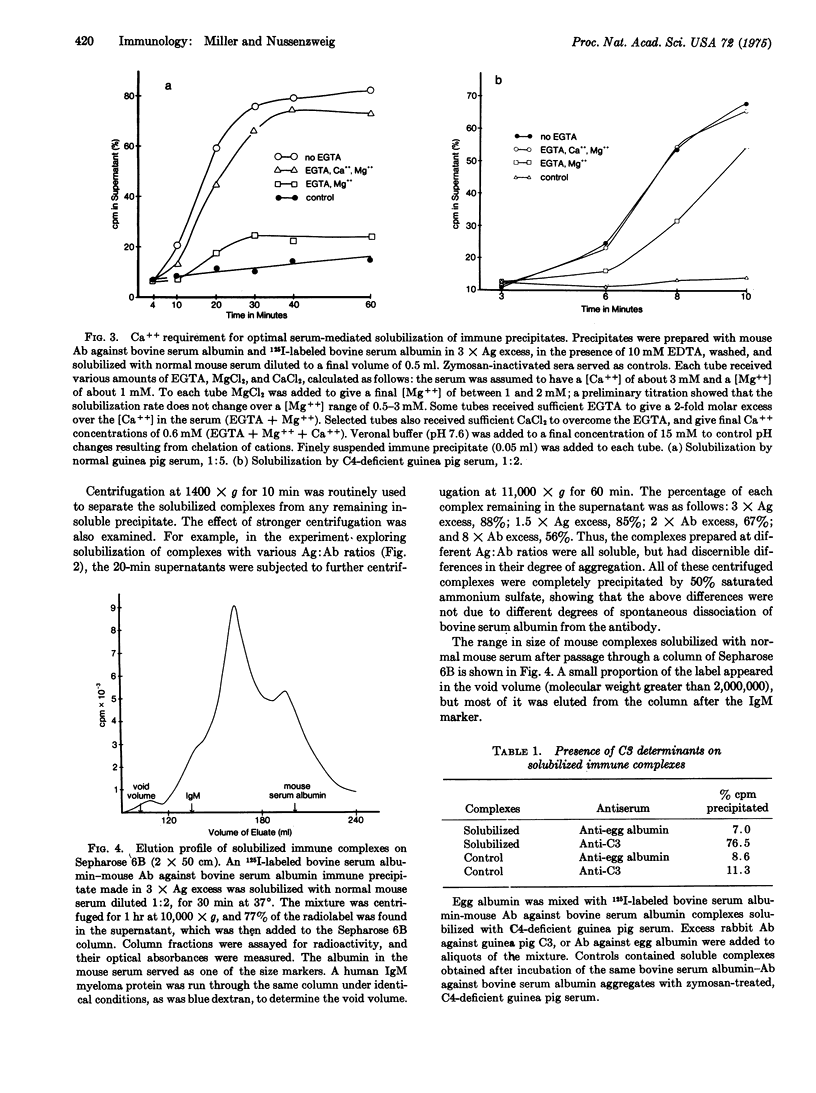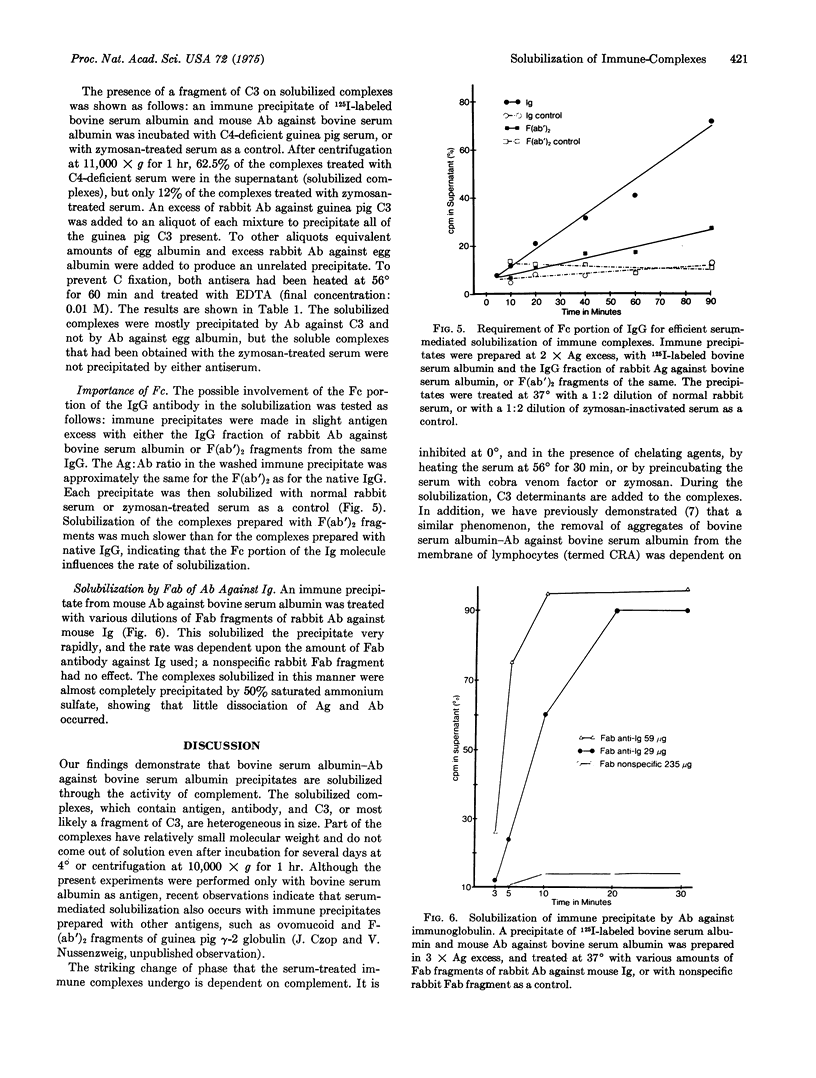Abstract
Antigen-antibody aggregates are solubilized when incubated with fresh serum at 37 degrees, yielding immune-complexes of relatively small molecular weight which contain antigen, antibody, and complement (C3)determinants. Solubilization is complement-dependent,requires free Mg++ but not Ca++, and proceeds in sera from C4- or C5-deficient animals. It is accelerated in the presence of Ca++ in normal or C4-deficient guinea pig serum, suggesting involvement of the Cl-bypass activation of the properdin system. Immune precipitates can also be solubilized by monovalent fragments (Fab) of antibodies directed against determinants of the antibody molecules included in the antigen-antibody lattice. Similarly, it is suggested that complement-mediated solubilization might be induced by the combination of a complement fragment with the antibody in the immune-aggregate.
Full text
PDF




Selected References
These references are in PubMed. This may not be the complete list of references from this article.
- DULBECCO R., VOGT M. Plaque formation and isolation of pure lines with poliomyelitis viruses. J Exp Med. 1954 Feb;99(2):167–182. doi: 10.1084/jem.99.2.167. [DOI] [PMC free article] [PubMed] [Google Scholar]
- Eden A., Bianco C., Bogart B., Nussenzweig V. Interaction and release of soulble immune complexes from mouse B luymphocytes. Cell Immunol. 1973 Jun;7(3):474–483. doi: 10.1016/0008-8749(73)90211-6. [DOI] [PubMed] [Google Scholar]
- Eden A., Bianco C., Nussenzweig Mechanism of binding of soluble immune complexes to lymphocytes. Cell Immunol. 1973 Jun;7(3):459–473. doi: 10.1016/0008-8749(73)90210-4. [DOI] [PubMed] [Google Scholar]
- MULLER-EBERHARD H. J., KUNKEL H. G. Isolation of a thermolabile serum protein which precipitates gamma-globulin aggregates and participates in immune hemolysis. Proc Soc Exp Biol Med. 1961 Feb;106:291–295. doi: 10.3181/00379727-106-26313. [DOI] [PubMed] [Google Scholar]
- May J. E., Frank M. M. A new complement-mediated cytolytic mechanism--the C1-bypass activation pathway. Proc Natl Acad Sci U S A. 1973 Mar;70(3):649–652. doi: 10.1073/pnas.70.3.649. [DOI] [PMC free article] [PubMed] [Google Scholar]
- McConahey P. J., Dixon F. J. A method of trace iodination of proteins for immunologic studies. Int Arch Allergy Appl Immunol. 1966;29(2):185–189. doi: 10.1159/000229699. [DOI] [PubMed] [Google Scholar]
- Miller G. W., Nussenzweig V. Complement as a regulator of interactions between immune complexes and cell membranes. J Immunol. 1974 Aug;113(2):464–469. [PubMed] [Google Scholar]
- Miller G. W., Saluk P. H., Nussenzweig V. Complement-dependent release of immune complexes from the lymphocyte membrane. J Exp Med. 1973 Sep 1;138(3):495–507. doi: 10.1084/jem.138.3.495. [DOI] [PMC free article] [PubMed] [Google Scholar]
- Müller-Eberhard H. J. Chemistry and reaction mechanisms of complement. Adv Immunol. 1968;8:1–80. doi: 10.1016/s0065-2776(08)60464-2. [DOI] [PubMed] [Google Scholar]
- NISONOFF A. ENZYMATIC DIGESTION OF RABBIT GAMMA GLOBULIN AND ANTIBODY AND CHROMATOGRAPHY OF DIGESTION PRODUCTS. Methods Med Res. 1964;10:134–141. [PubMed] [Google Scholar]
- Paul W., Benacerraf B. Problems encountered in double diffusion analysis in agar of hapten specific immune systems. I. Complement dependent precipitation. J Immunol. 1965 Dec;95(6):1067–1073. [PubMed] [Google Scholar]
- WEIGLE W. O., MAURER P. H. The effect of complements on soluble antigen-antibody complexes. J Immunol. 1957 Sep;79(3):211–222. [PubMed] [Google Scholar]


